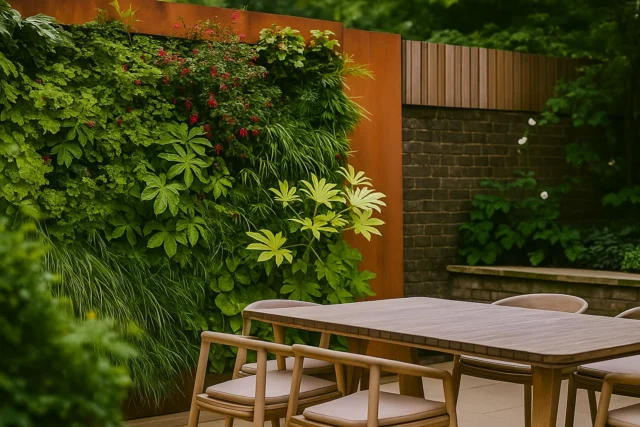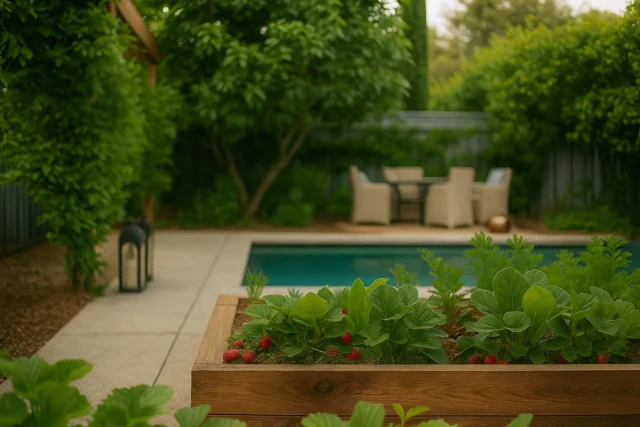When you’re looking to bake chicken breasts without drying them out, it’s vital to start with the right techniques. You can preheat your oven to 425°F for ideal moisture retention, but that’s just the beginning. By pounding the chicken to an even thickness and using a simple dry brine, you’ll set yourself up for success. Don’t overlook the importance of seasoning, either—adding a few choice spices can elevate the flavor considerably. So, what’s the next key step that could make all the difference in achieving that perfect juicy bite?
Table of Contents
Toggle
Preheating and Oven Temperature
Preheating your oven is essential for baking chicken breasts to perfection. You want to set your oven to 425°F for a quick cook that keeps the meat juicy. Remember, oven calibration matters; if your oven has temperature variations, it could lead to uneven cooking. Preheat until the desired temperature is reached to avoid undercooking.
If you’re roasting vegetables alongside, adjust the temperature to 350-400°F for the best results. Using a convection oven can help maintain a consistent heat, promoting even cooking. Additionally, cooking chicken breasts at high temperatures is key to preventing dryness, so keep a meat thermometer handy to check that your chicken reaches a safe internal temperature of 165°F. Avoid overcrowding the baking pan to guarantee proper heat distribution.
Preparing the Chicken
Once your oven is preheated, it’s time to prepare the chicken for baking.
Focus on a few essential steps for ideal chicken preparation and moisture retention:
- Pound chicken breasts lightly to guarantee even thickness.
- Use dry brining with kosher salt to help retain moisture.
- Place chicken breasts side by side in a greased or parchment-lined pan. Cooking chicken breasts in a humid environment can greatly enhance their moisture retention.
- Monitor the internal temperature using an instant-read thermometer.
Seasoning and Marinating
When it comes to seasoning and marinating your chicken breasts, the right mix of herbs and spices can elevate the flavor considerably. You’ll want to explore various techniques, from simple spice blends to more complex marinades that enhance moisture and taste. Proper seasoning and cooking techniques are essential for perfect chicken, with a recommended internal temperature of 165°F for doneness.
Spice Mix Essentials
To achieve flavorful and juicy chicken breasts, it’s vital to use the right spice mix for seasoning and marinating. The right blend not only enhances taste but also helps retain moisture.
Here are some essential components to take into account:
- Salt: Enhances flavor and moisture retention.
- Black Pepper: Adds depth and a subtle kick.
- Garlic Powder: Provides rich flavor and aromatics.
- Dried Thyme: Offers depth and pairs well with other herbs.
Experimenting with spice mix variations can create unique flavor profiles.
Think about adding paprika for a sweet or smoky touch, or cayenne pepper for a spicy kick.
Marinating Techniques Explained
Seasoning your chicken with the right spices sets the foundation for flavor, but marinating takes it a step further by infusing the meat with moisture and taste.
There are various marinade types, typically combining oil, acid, and seasonings. A common ratio is three parts oil to one part acid, using ingredients like lemon juice or balsamic vinegar to tenderize the chicken.
The marinade benefits include enhanced flavor and juiciness, so make sure to coat the chicken generously and pierce it with a fork for deeper penetration. Ideally, let it marinate for 30 minutes to 5 hours.
Remember to let the chicken rest at room temperature while the oven preheats for even cooking.

Baking the Chicken
Baking chicken breasts perfectly requires a keen eye on both temperature and timing. For best results, preheat your oven to 425°F (220°C). Higher temperatures lock in moisture and cook the chicken quickly.
Here are some key baking techniques to remember:
- Pound chicken breasts to guarantee even thickness.
- Season generously for maximum flavor.
- Flip the chicken halfway through baking.
- Broil for two minutes at the end for crispy edges.
Depending on the chicken types and their size, bake for 15-25 minutes. Using a baking dish that withstands high temperatures is essential.
Checking for Doneness
When it comes to checking for doneness, using a meat thermometer is your best bet to guarantee the chicken reaches 165°F.
You should also look for visual indicators like white, opaque meat and clear juices to confirm it’s fully cooked.
Using a Meat Thermometer
How can you guarantee your chicken breasts are perfectly cooked every time? Using a meat thermometer is vital! Here’s why you should invest in one:
- Makes sure chicken reaches a safe internal temperature of 165°F (74°C).
- Prevents overcooking, keeping your chicken juicy and tender.
- Provides accurate readings, unlike visual indicators.
- Fast thermometer types help you quickly gauge doneness.
To get the best temperature accuracy, insert the probe into the thickest part of the breast, avoiding bone or fat. Aim for pulling it at around 158°F-160°F (70-71.11°C) for carryover cooking.
Visual Color Indicators
While a meat thermometer is a reliable tool for ensuring chicken breasts are cooked to perfection, you can also rely on visual color indicators to check for doneness.
When you pierce the thickest part of the chicken, clear juices running out signal it’s fully cooked, while red or pink juices suggest it needs more time. Additionally, inspect the meat color; fully cooked chicken should appear white or opaque throughout. Pink hues indicate undercooking.
Also, check for shrinkage—cooked chicken shrinks compared to its raw state. If it looks seared but hasn’t shrunk, it mightn’t be done.
Finally, a firm texture will confirm a juicy appearance; avoid rubbery or overly hard chicken by monitoring these visual cues carefully.
Resting Time Importance
Resting time is vital for achieving juicy, tender chicken breasts after baking. When you allow your chicken to rest, you’re not just waiting to slice; you’re enhancing its overall quality.
Here’s why it matters:
- Juices redistribute throughout the meat.
- Slicing too soon causes significant juice loss.
- Resting enhances moisture retention.
- It maximizes the texture, making meat tender.
Using effective resting techniques, aim for ideal timing—about 5 minutes for small chicken breasts and up to 30 minutes for larger cuts.
This allows the residual heat to finish cooking while stabilizing the internal temperature. Check for doneness visually, and remember that resting not only improves flavor but guarantees each bite is juicy and satisfying.

Resting and Serving
To guarantee your baked chicken breasts are juicy and flavorful, you’ll want to let them rest after cooking. Resting for 3-5 minutes allows the juices to redistribute, keeping your chicken moist.
If you slice too soon, those precious juices will leak out, leaving you with dry meat. Once rested, use proper slicing techniques: cut against the grain for tender pieces that are easy to chew.
As for serving suggestions, pair your chicken with fresh vegetables or a light salad to complement its flavor.
The resting time is also a great opportunity to prep any sides or sauces, ensuring everything’s ready when it’s time to serve.
Enjoy your deliciously juicy chicken!













